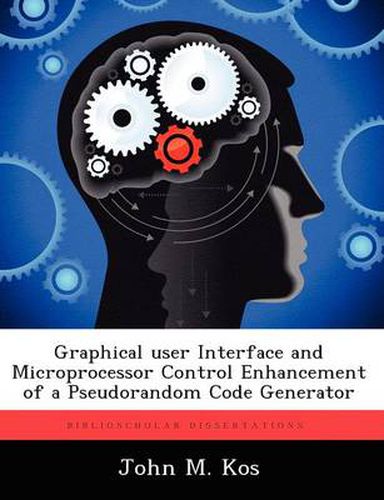Readings Newsletter
Become a Readings Member to make your shopping experience even easier.
Sign in or sign up for free!
You’re not far away from qualifying for FREE standard shipping within Australia
You’ve qualified for FREE standard shipping within Australia
The cart is loading…






This title is printed to order. This book may have been self-published. If so, we cannot guarantee the quality of the content. In the main most books will have gone through the editing process however some may not. We therefore suggest that you be aware of this before ordering this book. If in doubt check either the author or publisher’s details as we are unable to accept any returns unless they are faulty. Please contact us if you have any questions.
Modern digital communication techniques often require the generation of pseudorandom numbers or sequences. The ability to quickly and easily produce various codes such as maximal length codes, Gold codes, Jet Propulsion Laboratory ranging codes, syncopated codes, and nonlinear codes in a laboratory environment is essential. This thesis addresses the issue of providing automated computer control to previously built, manually controlled hardware incorporating the Stanford Telecom STEL-1032 Pseudo-Random Number (PRN) Coder. By incorporating a microcontroller into existing hardware, the STEL-1032 can now be conveniently controlled from a MATLAB Graphical User Interface (GUI). The user can quickly create, save, and recall various setups for the STEL-1032 in an easy to use GUI environment. In addition to having complete control of the STEL-1032’s internal actions, the microcontroller adds an extra measure of control possibilities by using various signals as possible interrupt sources. The microcontroller can sample the STEL-1032’s various outputs at a rate up to 320 kHz and the data can be imported directly into MATLAB for further analysis.
$9.00 standard shipping within Australia
FREE standard shipping within Australia for orders over $100.00
Express & International shipping calculated at checkout
This title is printed to order. This book may have been self-published. If so, we cannot guarantee the quality of the content. In the main most books will have gone through the editing process however some may not. We therefore suggest that you be aware of this before ordering this book. If in doubt check either the author or publisher’s details as we are unable to accept any returns unless they are faulty. Please contact us if you have any questions.
Modern digital communication techniques often require the generation of pseudorandom numbers or sequences. The ability to quickly and easily produce various codes such as maximal length codes, Gold codes, Jet Propulsion Laboratory ranging codes, syncopated codes, and nonlinear codes in a laboratory environment is essential. This thesis addresses the issue of providing automated computer control to previously built, manually controlled hardware incorporating the Stanford Telecom STEL-1032 Pseudo-Random Number (PRN) Coder. By incorporating a microcontroller into existing hardware, the STEL-1032 can now be conveniently controlled from a MATLAB Graphical User Interface (GUI). The user can quickly create, save, and recall various setups for the STEL-1032 in an easy to use GUI environment. In addition to having complete control of the STEL-1032’s internal actions, the microcontroller adds an extra measure of control possibilities by using various signals as possible interrupt sources. The microcontroller can sample the STEL-1032’s various outputs at a rate up to 320 kHz and the data can be imported directly into MATLAB for further analysis.